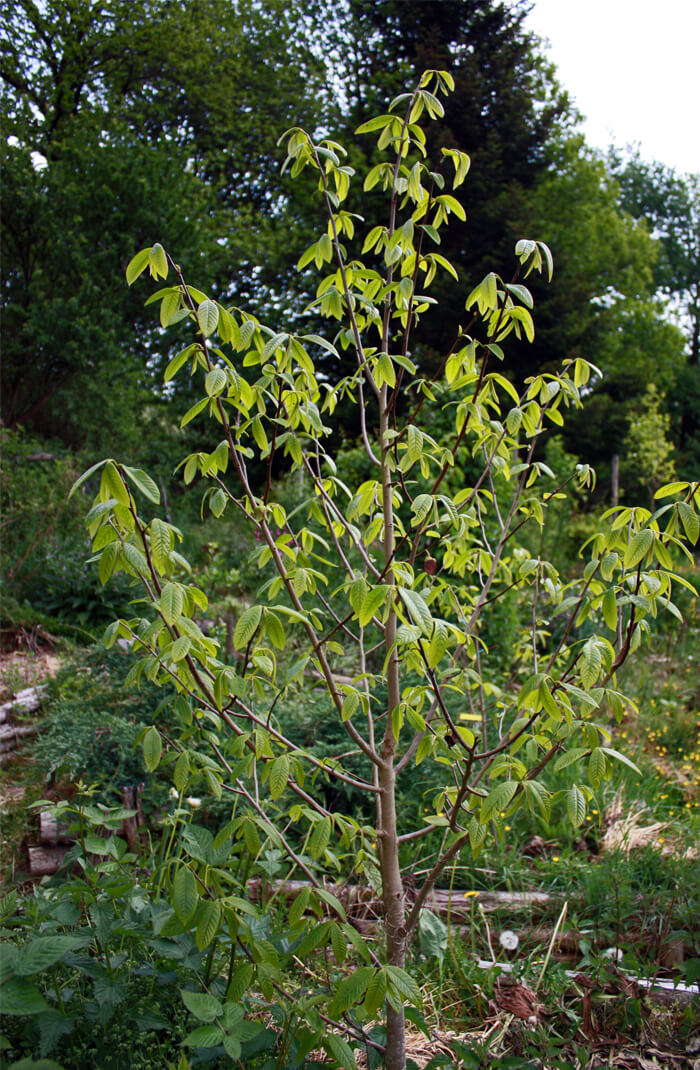Pawpaw Fruit TreeAsimina trilobaHeight: 10' average mature height Hardiness Zones: 5-8 Find my zone Aspect: full shade to full sun
Size Availability
Pawpaw trees are an Eastern U.S. native that is quite cold hardy but produces surprisingly tropical fruit. The fruit are medium to large sized and have an unusual but delicious flavor which is best described as being a combination of a mango and a banana. Some people also describe a third flavor added to the mix resembling custard. Fruit production usually starts when trees reach around six feet tall, which can take only a few years under ideal growing conditions. Pawpaw trees will also grow in difficult soil where other fruit trees will not grow, but will take more years to produce fruit. For best results till in rich organic matter such as compost to the soil when planting. Trees are also fairly drought tolerant but again will produce better and younger when irrigated. Trees are also planted just for landscape appeal because the large leaves make for an excellent shade tree.
medium plug seedling - 12 to 14 inches tall - single stem - $9.99 each
Ships free with orders of $75!
Packed with a bagged root ball.
Pawpaws are easy to grow if started correctly. Early nursery efforts seemed to indicate difficulty of establishment, which is why Pawpaw trees unfortunately were not readily available. However, trees form deep tap roots early on and the common methods of root pruning nursery stock were actually permanently damaging the roots. We grow our trees in containers so the roots are naturally air pruned and never cut, yielding strong and viable root structures.
Pollination
Two different plants must be used for cross pollination. A single tree planted without any others nearby will not produce fruit. These trees are grown from seed so any two trees will work for pollination.
Propagating
Asimina triloba
Pawpaw Trees
Amazingly, seedlings produce delicious and large fruit so you can grow more trees from the seeds. On most fruit trees, seedlings will typically be much smaller and far less flavorful than the parent variety (ever try the super sour fruit from cherry seedlings?) but not with Pawpaws. Tree can be propagated by root cuttings taken in late winter, take sections eight to twelve inches long and between half and one inch in diameter and place horizontally in well drained soil about one inch deep.

Beautiful fruit with easily removed seeds. 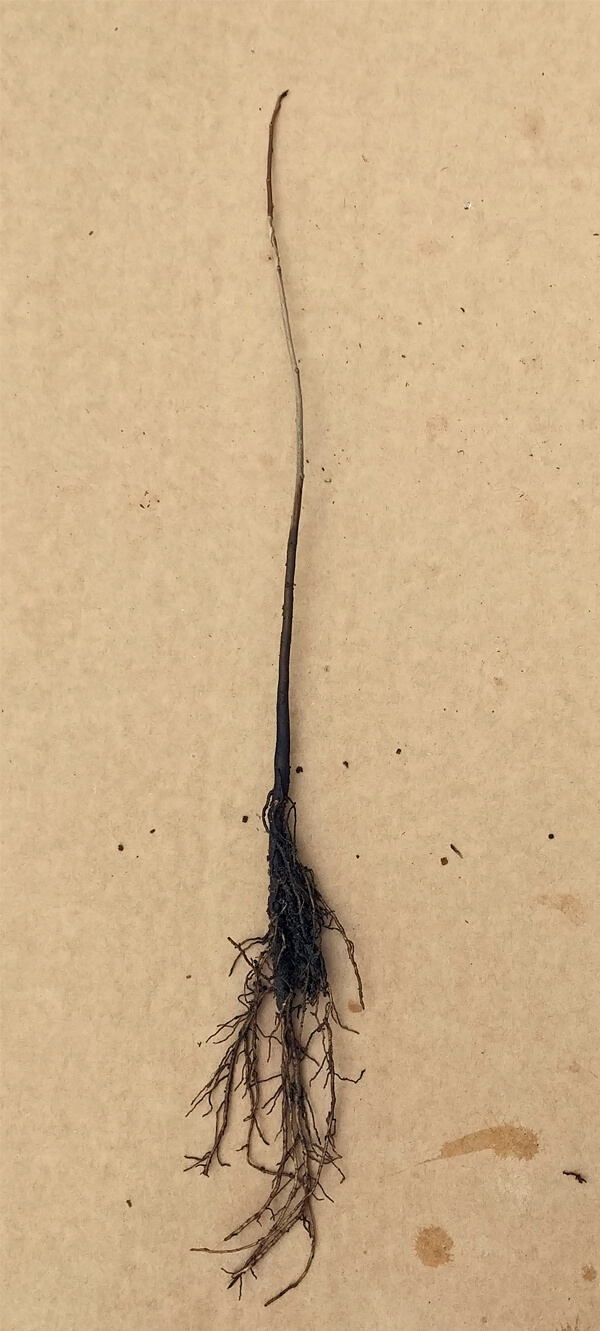
Asimina triloba - Pawpaw Fruit Tree seedling - plug seedling

Asimina triloba - Pawpaw Fruit Tree - 2 year seedling in fall, the stems are twigless after the large leaves drop in the winter
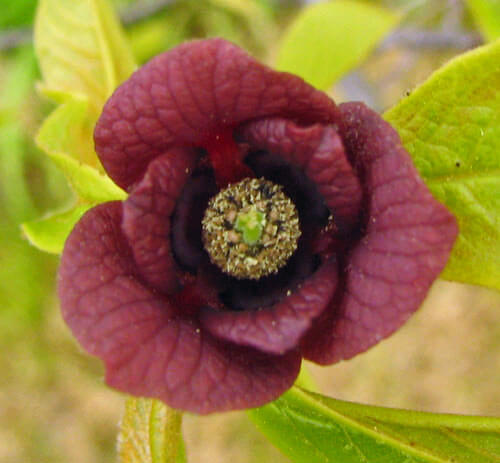
The spring flowers are quite attractive, especially up close.
Image Credit:
Wikipedia:Asimina-triloba
Packing Plants For ShippingMost of our plants are shipped bare root while they are dormant from late November through April and ship via the U.S. Postal Service. Bamboo plants can be shipped in their containers year-round by UPS.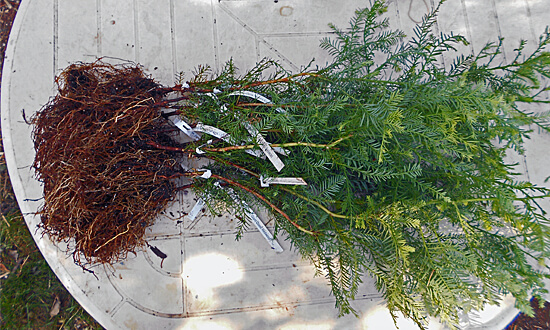 Bare root plants are soaked and wrapped together in bundles. ictured are 10x 24 inch tall Coast Redwoods. 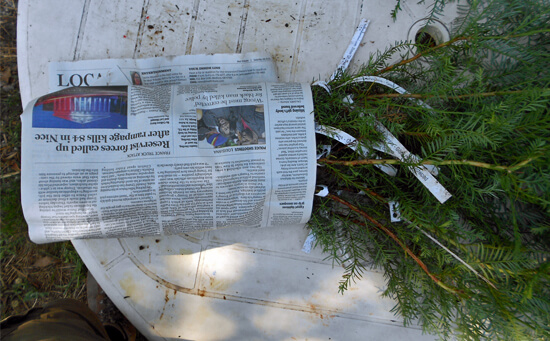 The bundled plants are wrapped in paper and labeled by variety. 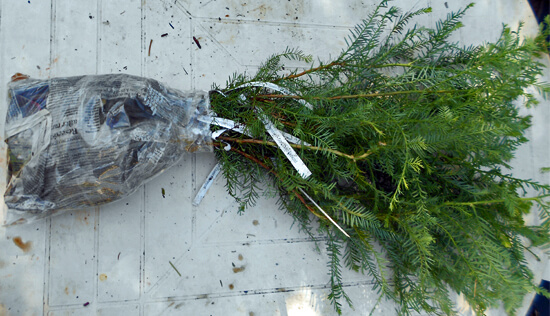 The bundle is wetted and bagged. 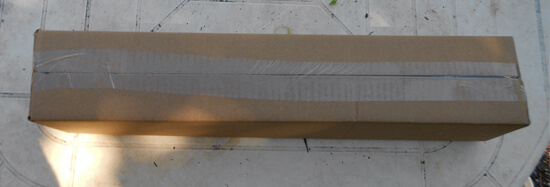 Bundles of plants are secured in long boxes. Pruning and Plant SizesWe prune both the tops and the roots of our plants at least once per year while they are growing in our nursery to ensure they develop a strong, dense form. Regular annual pruning goes a long way to ensure a healthy branching structure and this is often a missed step in many nurseries. Pruning a plant back hard after it has been neglected pruning-wise often results in an irregular branch habit or multiple leaders so we prune early and regularly instead. We also prune the roots of our plants while they are dormant which causes them to produce a much more branched structure and helps to elimate tangled masses that hinder future development. Plants that have been root pruned establish themselves much more quickly than root bound plants. Generally, hardwood plants will be pruned in the winter and conifers will be pruned in the summer.Before shipping plants we prune the tops and roots one last time. Conifers will usually have very little pruning except to balance out long branches. Shrubs are usually pruned to around 1-2 feet tall to encourage low branch development and small to medium sized trees are usually pruned to around 36-40 inches. Pruning trees at this height encourages dominant branches to begin forming around 3 feet from the ground which typically looks the best in most situations. However, if you want a tree to have branching start higher (some city codes require trees to not branch below 4 feet) we have longer boxes available. To request taller trees please contact us at least three days before your ship date. Depending on your location and the shipping routes there may be a fee for oversize package handling (usually about $15 for a 60 inch box). 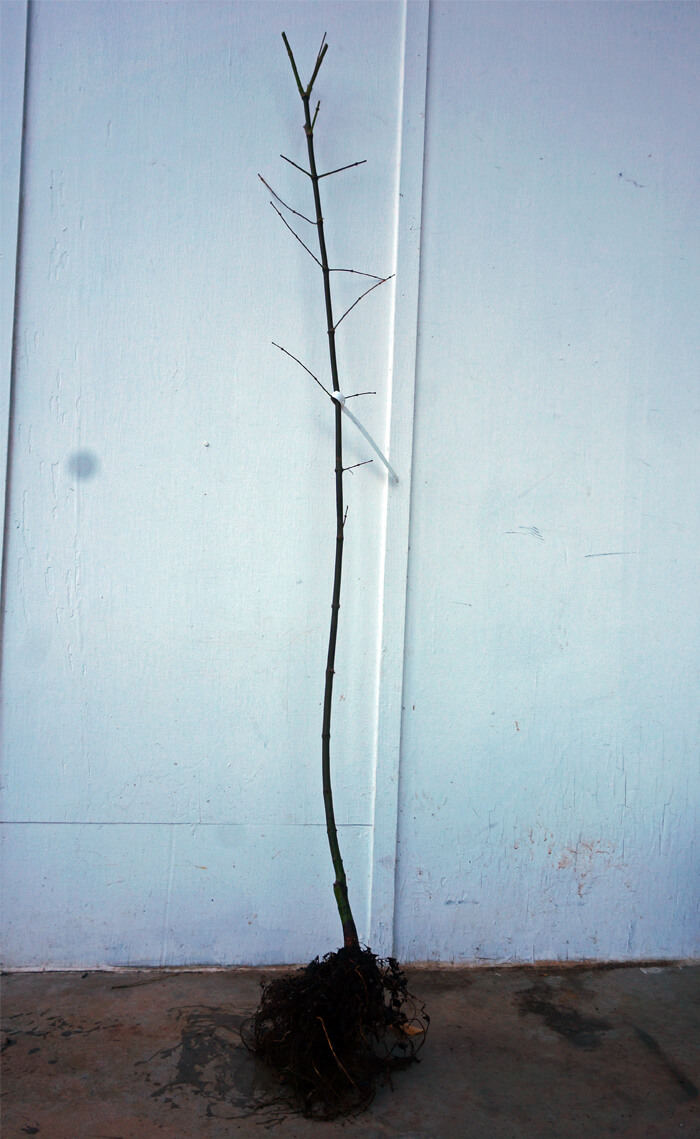 Tall trees (Oaks, Ginkgo, large Maples, etc.) are pruned to 40 inches to encourage crown development from about 36 inches and up 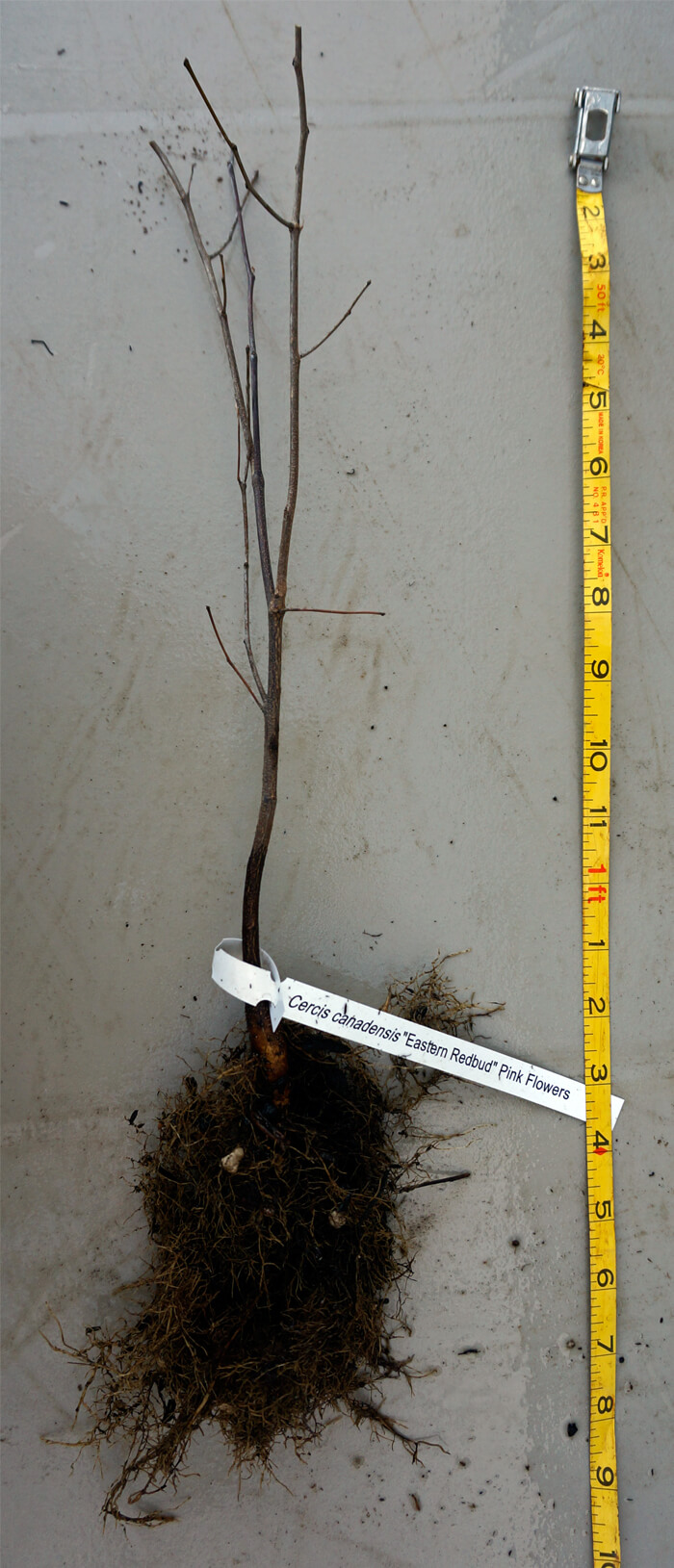 Small and medium trees (short Maples, Redbuds, Stewartia, etc.) are pruned 10-20 inches above the prune line from last year 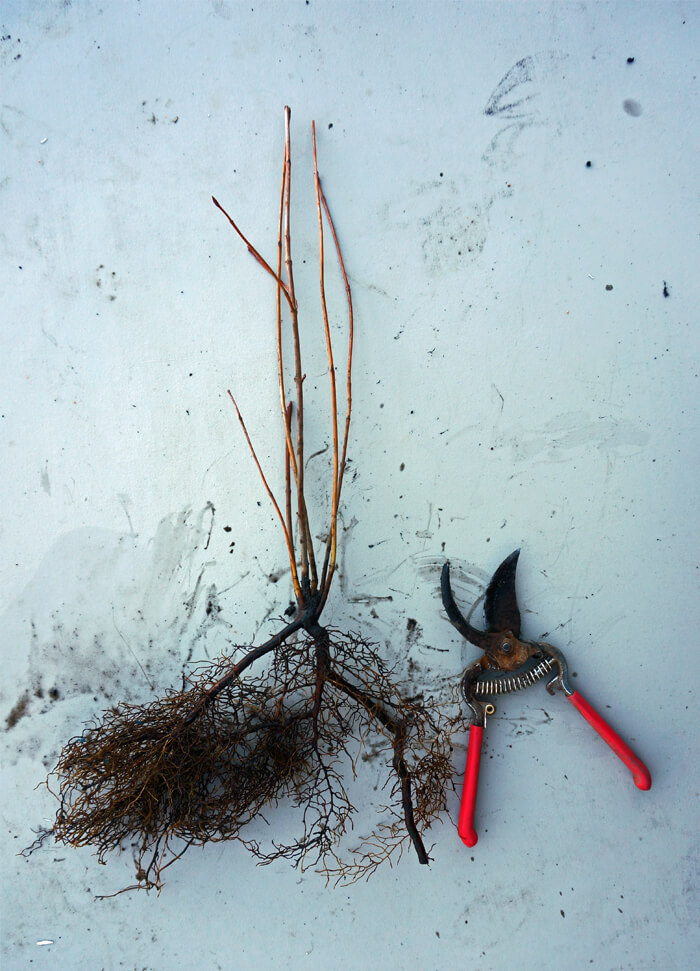 Shrubs (Weigela, Hydrangea, Viburnum, etc.) are pruned to 18 inches tall and root pruned one last time 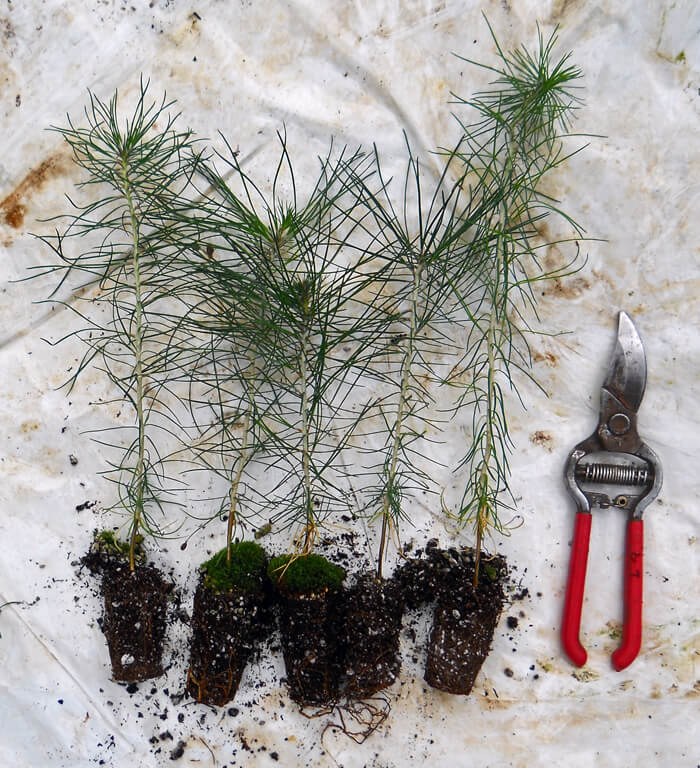 Small plug size Bamboo Plants Are Shipped In Their ContainersBamboo roots are not flexible and so plants have to be shipped in their containers. These plants are heavier and are shipped separately from bare root plants. Because they are potted they can handle longer transit times so can ship via UPS Ground instead of USPS Air Mail. Potted plants can also be shipped year-round.We regularly top our 1 gallon bamboo plants at 24-30 inches tall throughout the growing season. This results in dense, bushy foliage while allowing for economical shipping. From this size most running species will grow to 5-6 feet tall in the first spring and clumping species will usually grow to 4-5 feet tall. 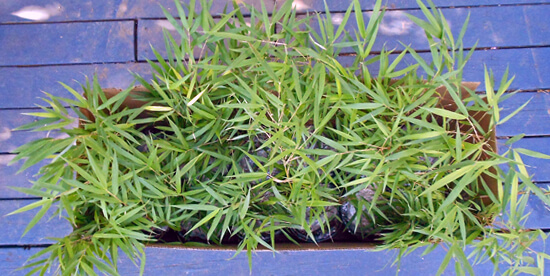 1 gallon bamboo plants strapped in and ready to be sealed. Unpacking Bare Root PlantsYou will be sent tracking details as soon as your plants are shipped. Unpack your plants as quickly as possible after they are delivered. We use two types of boxes, side-sealing and top-sealing. For boxes that are taped along the whole length you can cut the tape on either side and remove the plant bundles by cutting the tape holding the bundle to the bottom. For boxes that are sealed on the top and bottom, it is easiet to open the bottom of the box (the shipping label is at the top) and pull the bundle of plants out straight out. Check that the box is empty as there can be a second bundle of plants stuck towards the top.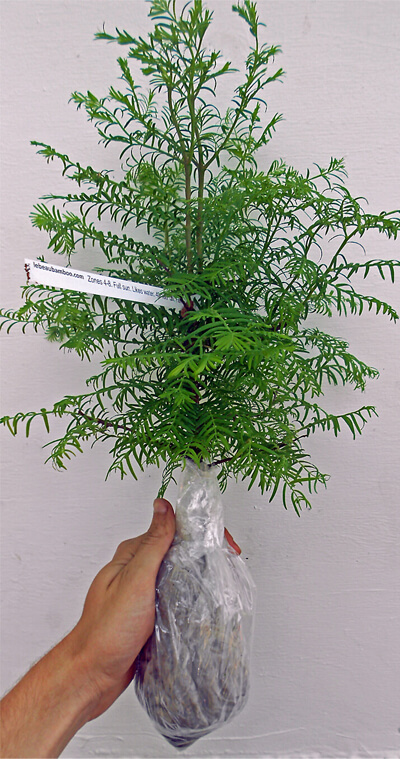 A bundle of trees. What if I am not able to plant right away?You can usually leave the plants in their shipping container unopened for 1-2 days if there were no shipping delays and you have received your plants from late November through February. Plants shipped when it is warmer can't stay in their packages for as long. |
Size Availability
medium plug seedling - 12 to 14 inches tall - single stem - $9.99 each
Ships free with orders of $75!
Packed with a bagged root ball.
|


